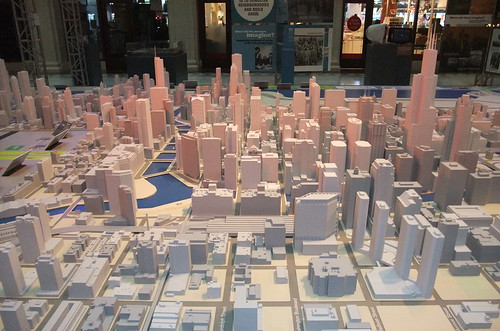
Things from secret minouette places has 700 hearts. :)
I love hearts.



 The New York Times has a really good slide show of a cold seep community in the Gulf of Mexico. I spend a lot of my time thinking about cold seeps. Sometimes it occurs to me that the people in my life are a little vague on 'what it is I do'. One of the things I do is study cold seeps. People don't realize that in many places in the world, gas just seeps up from the seafloor quite naturally, without any instigation. When you get gases at, or near, the seafloor a few things happen. If the pressure and temperature conditions are right (and they are in the GoM), you get gas hydrate. Also, gases, like methane are food to someone, so an entire ecosystem can build up. Actually, the cold seep where I've worked with a submersible (it's strange to me that people now hear terms like ROV on TV, and comedians remark on underwater robots as if these are something new) is sadly, remarkably dull and rather barren. And yet, even in a relatively barren patch of Pacific, the things one sees on the seafloor are so captivating that one literally has to order the scientists to leave the lab now and again to get some sleep. The funny things is, that physical scientists like me have no training to identify much of this flora and fauna. We keep a log of what we observe. We learn certain things - even a geophysicist can be expected to log obvious things like 'octopus', 'sea-pen', 'bacteria mat' (as these are far more common than you ever expected) - but often we are flummoxed and end up writing 'critter' or 'life'. The image is a screencapture I grabbed from a streaming video feed from an ROV when working offshore Canada's west coast. I don't know what it is, but there were a pair of them and they changed colours, and looked for all the world like deep purple mushrooms with multiple stalks. Anyway, go look at the pretty critters.
The New York Times has a really good slide show of a cold seep community in the Gulf of Mexico. I spend a lot of my time thinking about cold seeps. Sometimes it occurs to me that the people in my life are a little vague on 'what it is I do'. One of the things I do is study cold seeps. People don't realize that in many places in the world, gas just seeps up from the seafloor quite naturally, without any instigation. When you get gases at, or near, the seafloor a few things happen. If the pressure and temperature conditions are right (and they are in the GoM), you get gas hydrate. Also, gases, like methane are food to someone, so an entire ecosystem can build up. Actually, the cold seep where I've worked with a submersible (it's strange to me that people now hear terms like ROV on TV, and comedians remark on underwater robots as if these are something new) is sadly, remarkably dull and rather barren. And yet, even in a relatively barren patch of Pacific, the things one sees on the seafloor are so captivating that one literally has to order the scientists to leave the lab now and again to get some sleep. The funny things is, that physical scientists like me have no training to identify much of this flora and fauna. We keep a log of what we observe. We learn certain things - even a geophysicist can be expected to log obvious things like 'octopus', 'sea-pen', 'bacteria mat' (as these are far more common than you ever expected) - but often we are flummoxed and end up writing 'critter' or 'life'. The image is a screencapture I grabbed from a streaming video feed from an ROV when working offshore Canada's west coast. I don't know what it is, but there were a pair of them and they changed colours, and looked for all the world like deep purple mushrooms with multiple stalks. Anyway, go look at the pretty critters.




 {image by Adrian Tomine}
{image by Adrian Tomine} 

 If people other than Lady & Mr. Redjeep would like a portrait of the handsome, blue-grey cat with a fruit-fetish, Mr. Sammy Samuelson, I have added the rest of the first edition linocuts to my shop.
If people other than Lady & Mr. Redjeep would like a portrait of the handsome, blue-grey cat with a fruit-fetish, Mr. Sammy Samuelson, I have added the rest of the first edition linocuts to my shop.  I had an hour to kill yesterday, in Ottawa, so I did the obvious. After all, I've been to Ottawa several times, but I hadn't really gone to see Parliament since I was 12. But first, the Supreme Court, a building I really like. It's got great, and somehow unexpected proportions.
I had an hour to kill yesterday, in Ottawa, so I did the obvious. After all, I've been to Ottawa several times, but I hadn't really gone to see Parliament since I was 12. But first, the Supreme Court, a building I really like. It's got great, and somehow unexpected proportions.



 In the bushes, right before the Parliament steps, there was a semi-stealthy groundhog. It would have been too funny if it were a beaver. I took several photos until the RCMP drove up slowly and then I decided perhaps I was behaving suspiciously and should move along.
In the bushes, right before the Parliament steps, there was a semi-stealthy groundhog. It would have been too funny if it were a beaver. I took several photos until the RCMP drove up slowly and then I decided perhaps I was behaving suspiciously and should move along.




























